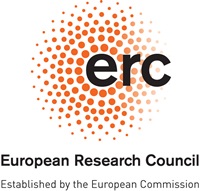The horizon is the line that seems to separate earth from sky, the line that divides all visible categories into two categories: those that intersect the earth’s surface and those that do not. The horizon is key to the experience of space; it defines our perspective on the visible world. The Global Horizons project will investigate the historical meanings and functions of the horizon in visual and intellectual cultures of the pre-modern world on a global scale. Examining how pre-modern cultures conceived of the horizon opens a crucial line of inquiry into understanding the many different ways in which humans have conceived of the relationship between an invisible cosmos and the visible world.
Non-western art history is rarely taught at European institutions although countless important works of non-Western art are kept in museum collections all across Europe. Including non-western concepts of pictorial space is key to the project, however, for eurocentric models of art history have generally privileged the rise of the linear perspective. This framing has limited our understanding of the horizon’s complex rhetorical, visual and epistemological roles.
The project’s specific question connects a variety of objects and epistemological categories, such as panel painting, manuscript illumination, profane und religious objects, cartography, travel accounts, and cosmological treaties. Accordingly, the methodological approaches will range from art history and visual studies to cultural anthropology. Team members will also draw upon interdisciplinary expertise, such as technologies of art production, history of science and philosophy. The project thus makes an important contribution to global art history, a highly innovative area in which only very few pre-modern topics have been addressed. It is the ultimate goal of Global Horizons to suggest a new history of representation in western medieval art.
The project is funded by the European Research Council from 2018-2024 and hosted at the University of Bern, at the Institute for History of Art. We are collaborating with museums in Bern, Neuchatel, Basel, Zurich and Geneva and our collaborators are teaching and researching at the NYU, University of Chicago, Columbia University, Washington/CASVA, University of Southern California, University of Pennsylvania, Johns Hopkins University; UCLA, Masaryk University, University of Pittsburgh.
